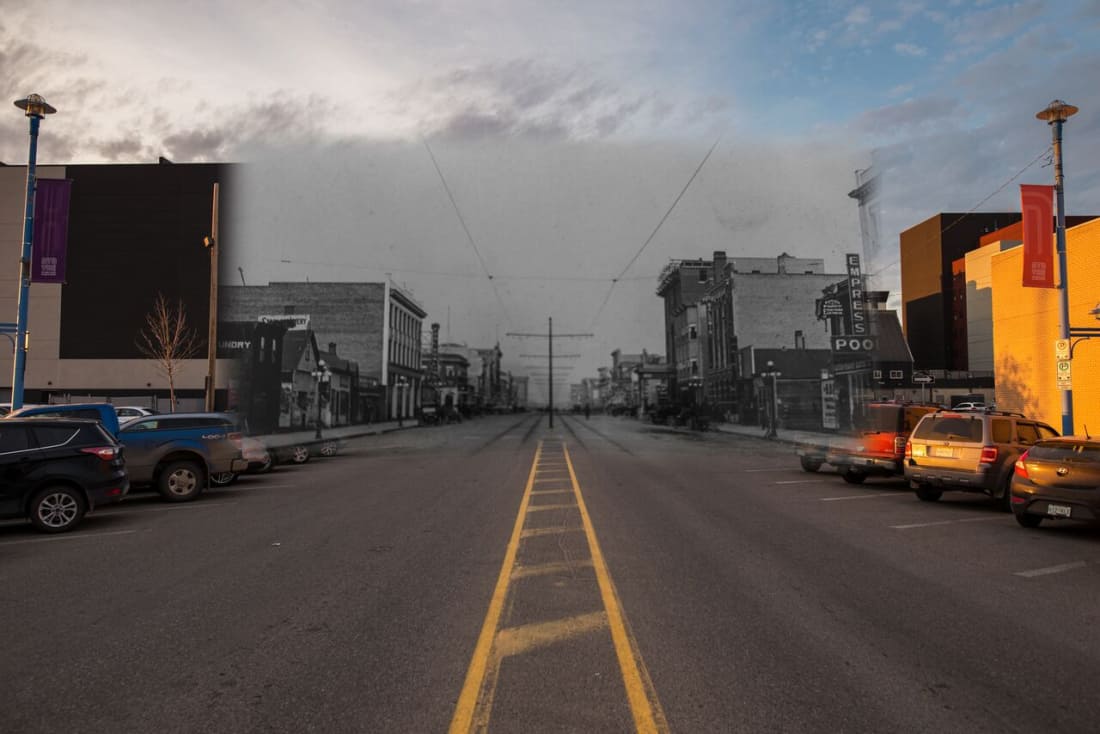For two years Harris Ford has been researching a forgotten aspect of Saskatoon’s history — the early Chinese immigrant community that owned various businesses and contributed to the city’s growth.
Ford became fascinated with the Chinatown that had existed in the downtown core before it was demolished in the 1930s. Since he had never heard about this period in the city’s development before, he started creating a walking tour to showcase this ignored history.
“There had been one article written on the subject, but that was it,” Ford said. “I could not believe that no historian had written on this episode of Saskatoon’s history, and I thought it was about time to have it known.”
Ford continued developing his walking tour as an assignment for the Saskatoon History Workshop course before graduating with a bachelor’s degree in history last year.
Now in his first year of a history master’s program, he will be offering his finalized tour as a free Jane’s Walk in the first week of May.
Ford says that learning about this rich local history helps breakdown “false narratives” where Chinese Immigrants are cast into troublesome “us versus them” binaries.
“What my research shows is that Saskatoon had a spectacular mixture of cultures prior to Chinatown’s destruction in 1929,” Ford said.
His walk begins on 19th Street East, in the heart of what was Saskatoon’s Chinese community between 1904 to the 1920s. From there, Ford will guide attendees towards River Landing while discussing the businesses Chinese immigrants owned during that time.
These included general stores, laundry services, restaurants and even a Chinese government-owned aviation school within the city. Although few of the actual buildings from this period are still standing, Ford believes that history comes alive when we use our senses.
“Reading an article is a great way to be exposed to this story but being able to walk and experience these sites firsthand is a wonderful way to become interested in the history,” Ford said.
Ford says racial discrimination was underlying many Chinese-run businesses because these citizens were often prevented from acquiring any other form of employment. The Canadian Government’s head tax used to deter Chinese immigrants, which lasted until 1923, also helped to create a “bachelor society” in Saskatoon.
“It is no wonder why Chinese-Canadian communities did not include many families; it was too expensive to immigrate, which is what Canada wanted,” Ford said.
“While discrimination against Chinese settlers was real and problematic, Saskatoon also witnessed a wonderful coming together of citizens.”
These actions included Chinese-European friendships and newspapers celebrating Chinese marriages, pilot certificates and long-standing local businesses. The history was a complicated picture of exclusion and acceptance.

The tour ends at Zhongshan Ting pagoda in Victoria Park, a monument dedicated to these early Chinese settlers that helps remind us of this history’s importance, Ford says. Last June, Ford conducted his walk for the first time at the request of the International Student and Study Abroad Centre.
“History is often a solo endeavor, but this walk reminded me of how important it is to share the excitement and to communicate my passion to others,” Ford said.
For Ford, it was “heartwarming” to see students interact with his stories, so he is excited for the opportunity to share this walk again this year. Even though his master’s thesis focuses on international issues, he believes learning about Saskatoon’s forgotten history is equally important.
“Very slowly I have started to appreciate the history of home, and I continue to be amazed by everything that can be found out about this city,” Ford said.
“We can live perfectly happy lives without knowing this history, but we can greatly enrich, complicate, and enhance our everyday experiences by taking the time to learn and have our perceptions challenged.”
—
Noah Callaghan | Staff Writer
Map: Aqsa Hussain | Layout Manager
Photo: Supplied